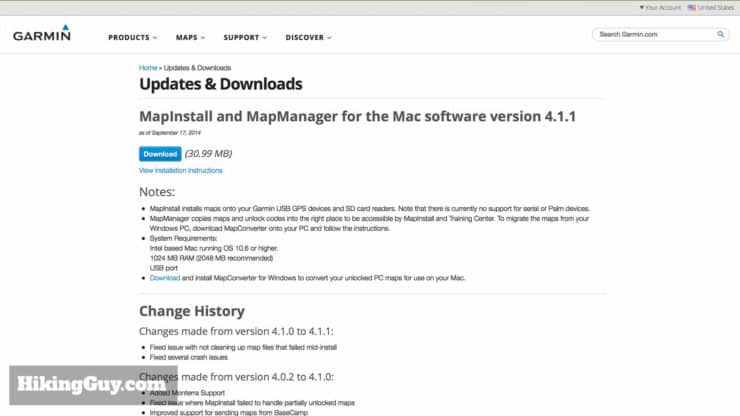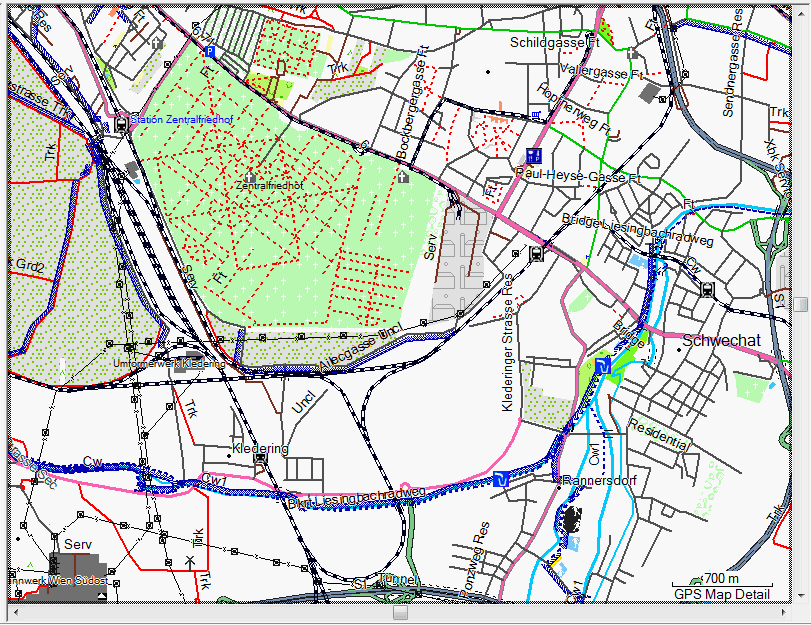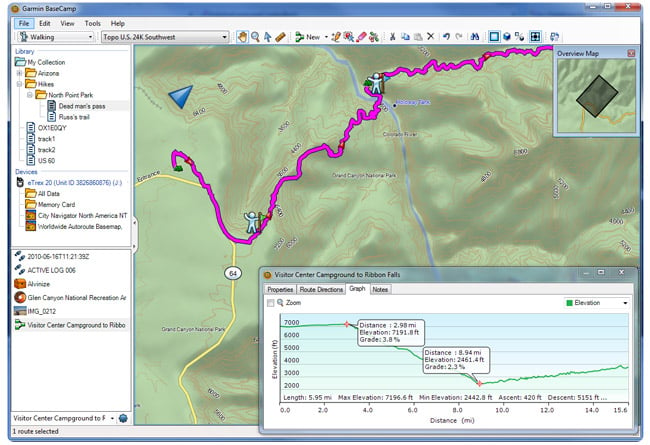Contents
Garmin® is happy to provide a downloadable tutorial for our MapSource products. While our MapSource products don't support Macs at this time, we have provided the tutorial in both Mac and PC formats. Please choose the appropraite file below for your computer platform. There are several programs to display VeloMaps on your PC/notebook. The most popular is still Garmin Mapsource - even though it is superseeded by Garmin Basecamp and also Qlandkarte GT is on the way to overtake it. Garmin Mapsource is not develloped anymore, but version 6.16.3 runs still pretty well and has no big bugs. There is a catch however. Garmin MapSource connection to MACintosh Computers: How to do it. Here's a quick guide on how to get Garmin's software to work on and interface with their standard serial interface (NOT USB!) GPS devices on a Macintosh running Virtual PC. By Garmin MapSource products provide geographic data in CD-ROM format that can be viewed on a PC. Additionally, some GARMIN units can accept map downloads from various MapSource products to. Use BaseCamp software to plan your next hiking, biking, motorcycling, driving or off-roading trip. You can view maps, plan routes, and mark waypoints and tracks from your computer — then transfer them to your device.
- 1 Convert the maps:

Donate to Openmtbmap - and download readily converted maps
If you don't want to convert the maps, I converted the most popular openmtbmaps / velomaps ready to be used with Basecamp or Roadtrip in gmap format for Mac OSx. Simply look at the bottom of the download page for them (only available to donators)
Don't convert but use Qlandkarte GT
just accept that Garmin programs for Mac OSx are lousy - (well the whole OS is as lousy as Windows, but with fewer people using it, I wont give a damn for it - best treat your Mac hardware with a good OS like Ubuntu Linux instead of junk with nice eye candy).
However Qlandkarte GT is working splendidly with the openmtbmaps, and is easy to learn. Only drawback is, that there is no autorouting support for garmin maps (yet). You only need to extract the maps to a folder of your choice then use Qlandkarte GT.

Don't convert but use gmapsupp.img import by Basecamp
The irony of Basecamp for MacOSx not reading in the standard .img format, is topped up, by the fact that it reads the nearly identically structured gmapsupp.img files.
So use Windows Basecamp/Mapsource or gmaptool or mkgmap or sendmap to create a gmapsupp.img - put it on a external harddisk or flash memory (you could also put it onto your GPS, but than it's slower) and import it into Basecamp. This way you also don't have to actually convert the maps.
Convert the maps:

See several possibilities on how to do it below:
Convert the maps with gmapibuilder
To unzip you can use: http://unarchiver.c3.cx/unarchiver
Convert the maps yourself under Windows with tools provided by Garmin:
Unfortunately you need an Windows installation for converting the maps. Principally you have to:
1. Install the maps with install.bat under Windows (You have to have Mapsource installed)
2. Downlaod, install and run Garmin Map Converter for Windows
Garmin Mapsource Apple Mac
3. Downlaod and install the Mapstall/MapManager package to your Mac to complete the migration Garmin provides detailed instructions how to do this http://www8.garmin.com/support/download_details.jsp?id=3897 See also http://www8.garmin.com/macosx/index.jsp
Alternatively you can use Sendmap to transfer the maps to your GPS (see Tutorial (still to be written))
Garmin Mapsource Update
You could also install Qlandkarte GT - you will have to compile it first though. Builds are only available for Windows (plus easy installation on Ubuntu - but probably added into repos soon anyhow).
BTW: As all my maps are published under CCBYSA 2.0 / The new Openstreetmap Licence - you may share your mac map files freely - as long as you contribute openstreetmap.org and openmtbmap.org and stick to the same license. Unfortunately you need an windows installation for converting the maps to 'Mapsource for Mac' aka Roadtrip.
Principally you have to:
1. Install the maps with install.bat under Windows (You have to have Mapsource installed)
2. Downlaod, install and run Garmin Map Converter for Windows
3. Downlaod and install the Mapstall/MapManager package to your Mac to complete the migration Garmin provides detailed instructions how to do this http://www8.garmin.com/support/download_details.jsp?id=3897 See also http://www8.garmin.com/macosx/index.jsp
Alternatively you can use Sendmap to transfer the maps to your GPS (see Tutorial (still to be written))
You could also install Qlandkarte GT - you will have to compile it first though. Builds are only available for Windows (plus easy installation on Ubuntu - but probabley added into repos soon anyhow).

BTW: As all my maps are published under CCBYSA 2.0 / The new Openstreetmap Licence - you may share your mac map files freely - as long as you contribute openstreetmap.org and openmtbmap.org and stick to the same license.
Convert and Install the maps yourself using Mac OSX only (description provided by Tom):
Required software:
Steps: